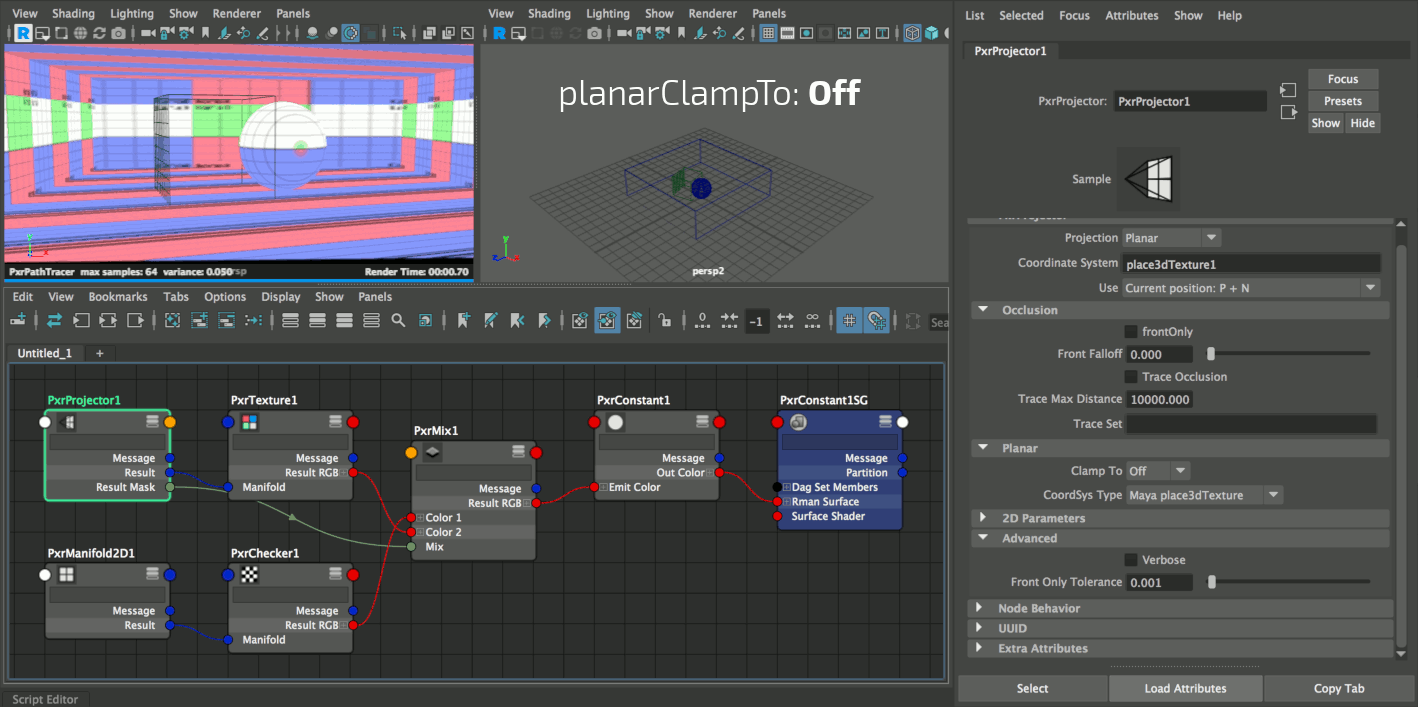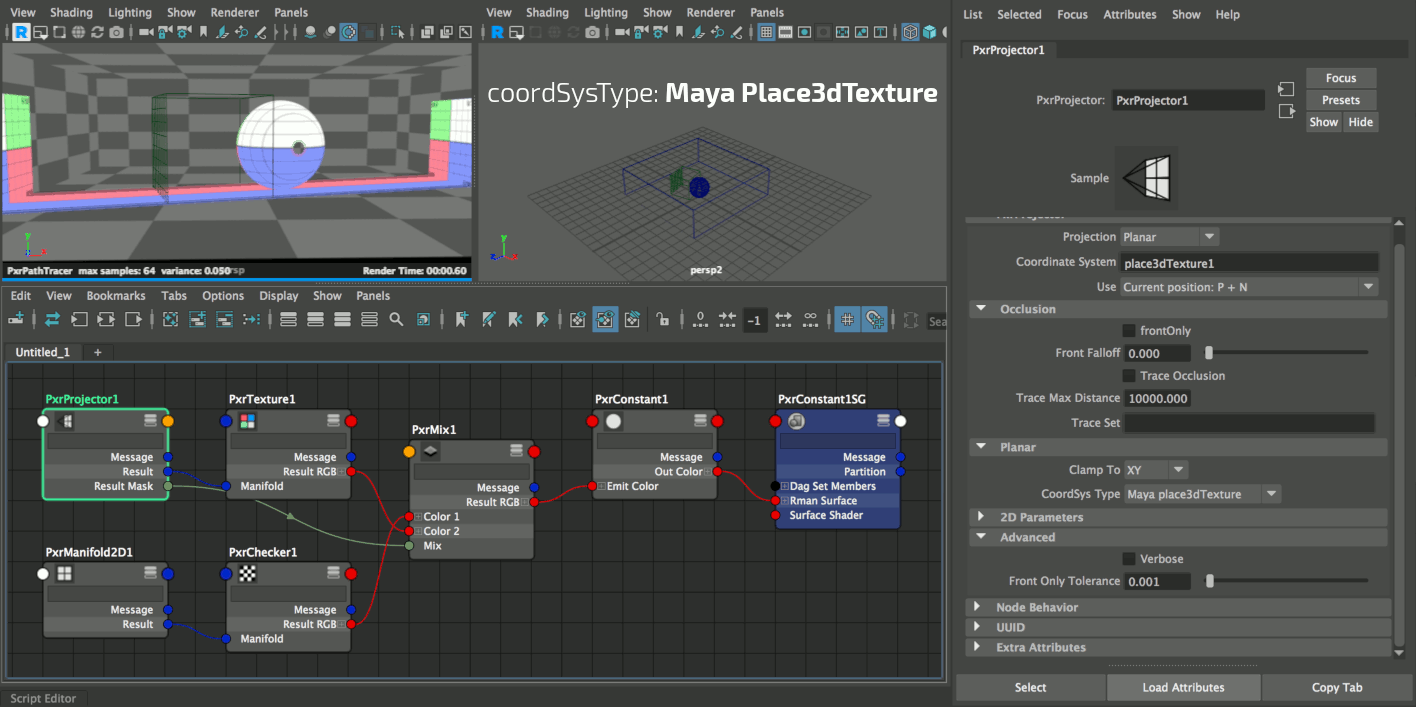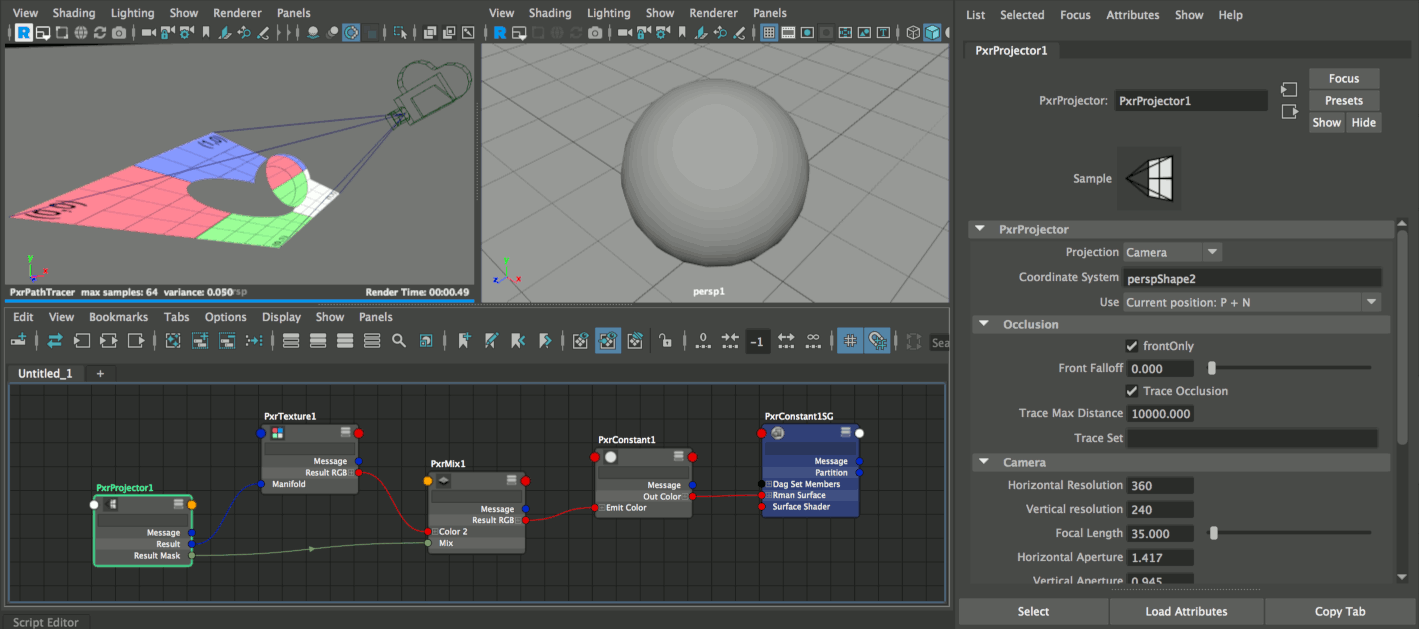Contents
This node is meant to work in conjunction with PxrProjectionLayer but can be used as a general projection manifold. This manifold supports camera, spherical and cylindrical mapping. It encapsulates 2D parameterization for pattern generators and allows transformations and selection of arbitrary variables bound to primitives.
Projection
Select a projection:- 0: Camera
- 1: Spherical
- 2: Cylindrical
- 3: Planar
Coordinate System
You must set a coordinate system. This field can not be left empty.
Use
- 0: P - N P is the current position and N the current normal
- 1: Pref - Nref Use this if your object if deforming and you want the projected texture to 'stick'. This relies on two primvars :
__Prefand__Nrefthat should be present on the deforming geometry. In Maya, use the RenderMan > Primvars > Freeze menu to add them to the selected geometry. - 2: WPref - WNref This will allow your projected texture to stick if the object is deforming AND transformed. It relies on
__WPrefand__WNrefprimvars. In Maya, use the RenderMan > Primvars > Freeze menu to add them to the selected geometry.
Occlusion frontOnly
Restricts the projection to the points facing the projection direction.
Front Falloff
Introduces a smooth transition when using frontOnly. Useful to blend transitions between different projections. The default, 0.0, means no falloff.
Trace Occlusion
Shoots rays to avoid projecting on areas that are occluded by geometry, from the projections point of view.
Trace Max Distance
When traceOcclusion is on, you can limit the ray length. This number is expressed in scene units, whatever it may be in your authoring package.
Trace Set
The name of a trace set to restrict ray hits to a specific group of objects. The default is to consider all objects in the scene.
Camera
Horizontal Resolution
The horizontal image resolution. This is used to specify your image's original resolution, prior to txmake-ing.
Vertical resolution
The vertical image resolution. This is used to specify your image's original resolution, prior to txmake-ing.
Focal Length
The focal length of the camera is in millimeters (mm). To convert the Field of View (fov) to the Focal Length, use this
fov = atan((0.5 * aperture) / (focalLength * 0.0393701))
Horizontal Aperture
Vertical Aperture
Near Clip Plane
Far Clip Plane
Film Fit
- 0: Fill
- 1: Horizontal
- 2: Vertical
- 3: overscan
Clamp To
- 0: Off The projected texture is everywhere
- 1: Frustum The projected texture only appears inside the camera frustum
- 2: Texture The texture is projected in its entirety, irrespective of the camera frustum.
Planar
Clamp To
Clamp the planar projection, assuming the coordinate system is represented as a cube.
- 0: Off The projected texture is everywhere.
- 1: XY The projected texture appears on the XY plane of the coordinate system.
- 2: XZ The projected texture appears on the XZ plane of the coordinate system.
- 3: YZ The projected texture appears on the YZ plane of the coordinate system.
- 4: XYZ The projected texture appears inside the coordinate system's volume.
CoordSys Type
There are 2 different types to match different viewport representations.
- 0: Generic The coordinate system is a 1 unit wide cube.
- 1: Maya place3dTexture the place3dTexture is 2 units wide.
2D Parameters
Angle
Scale S
Scale T
Offset S
Offset T
Invert T
Advanced
Verbose
Front Only Tolerance
This parameter is sometime useful to avoid projecting on surfaces that are close to the grazing angle.
Output Parameters
result
resultS
resultT
resultMask



